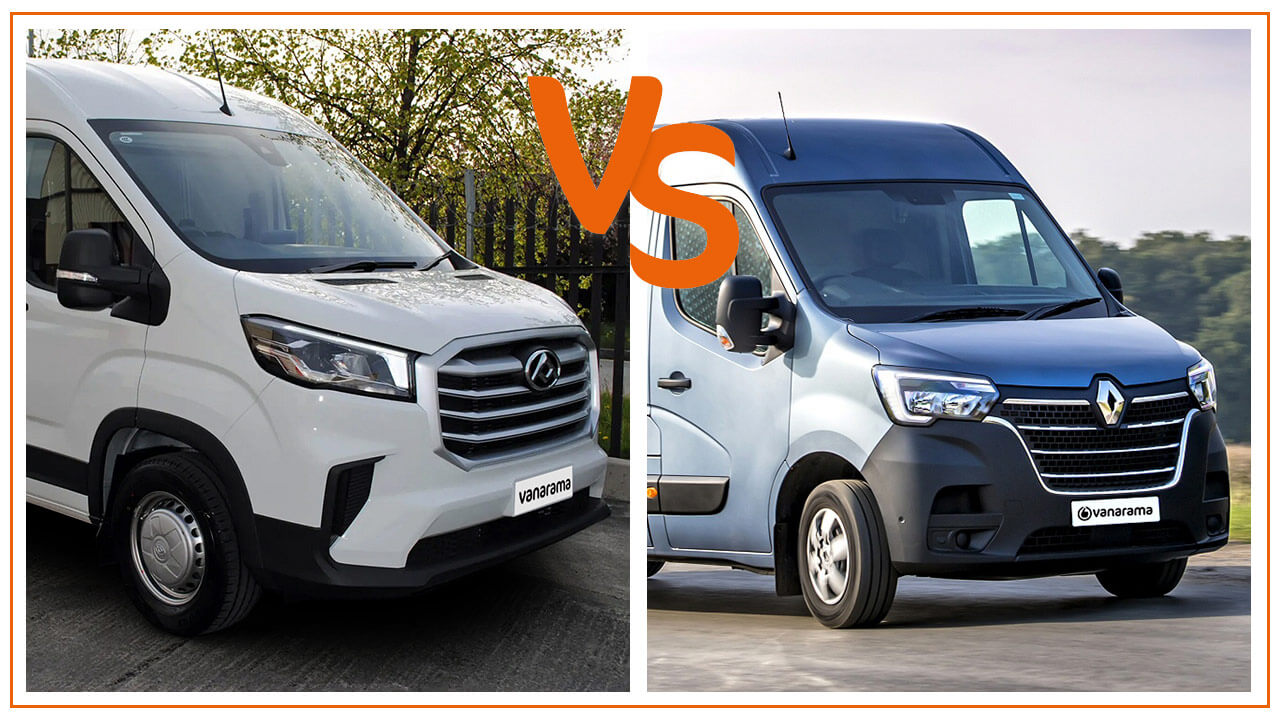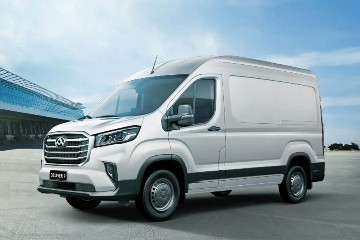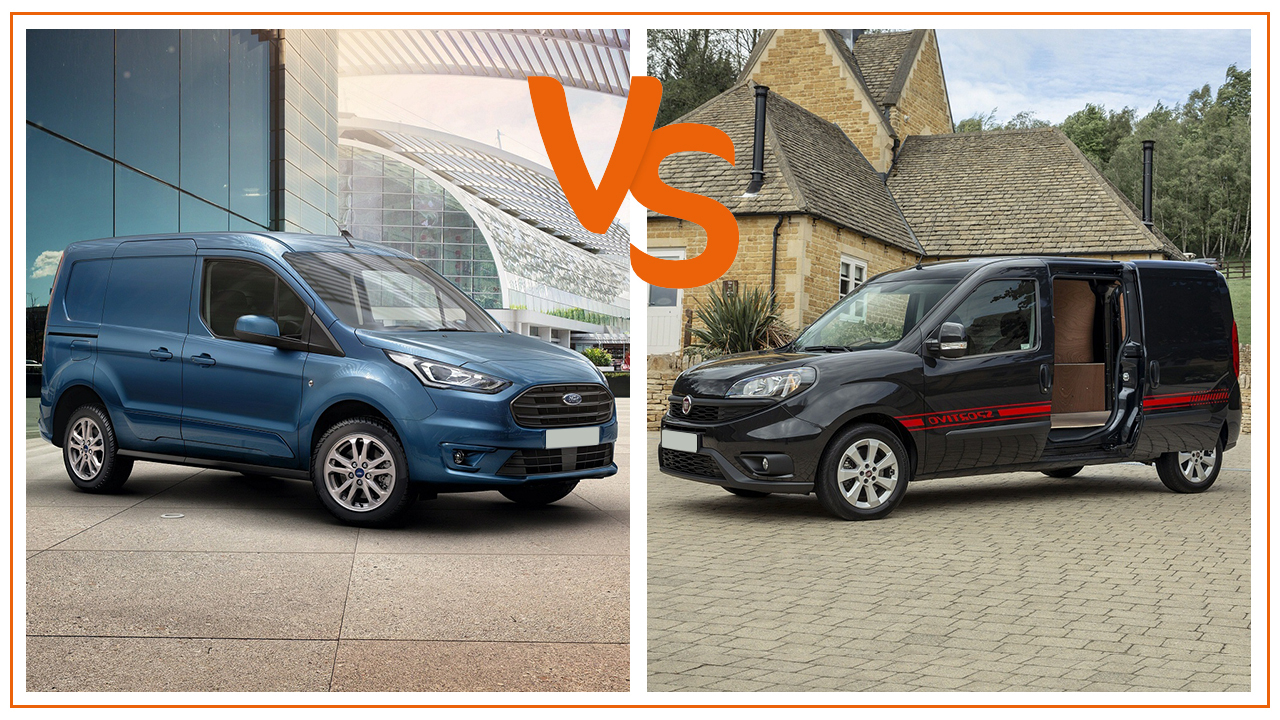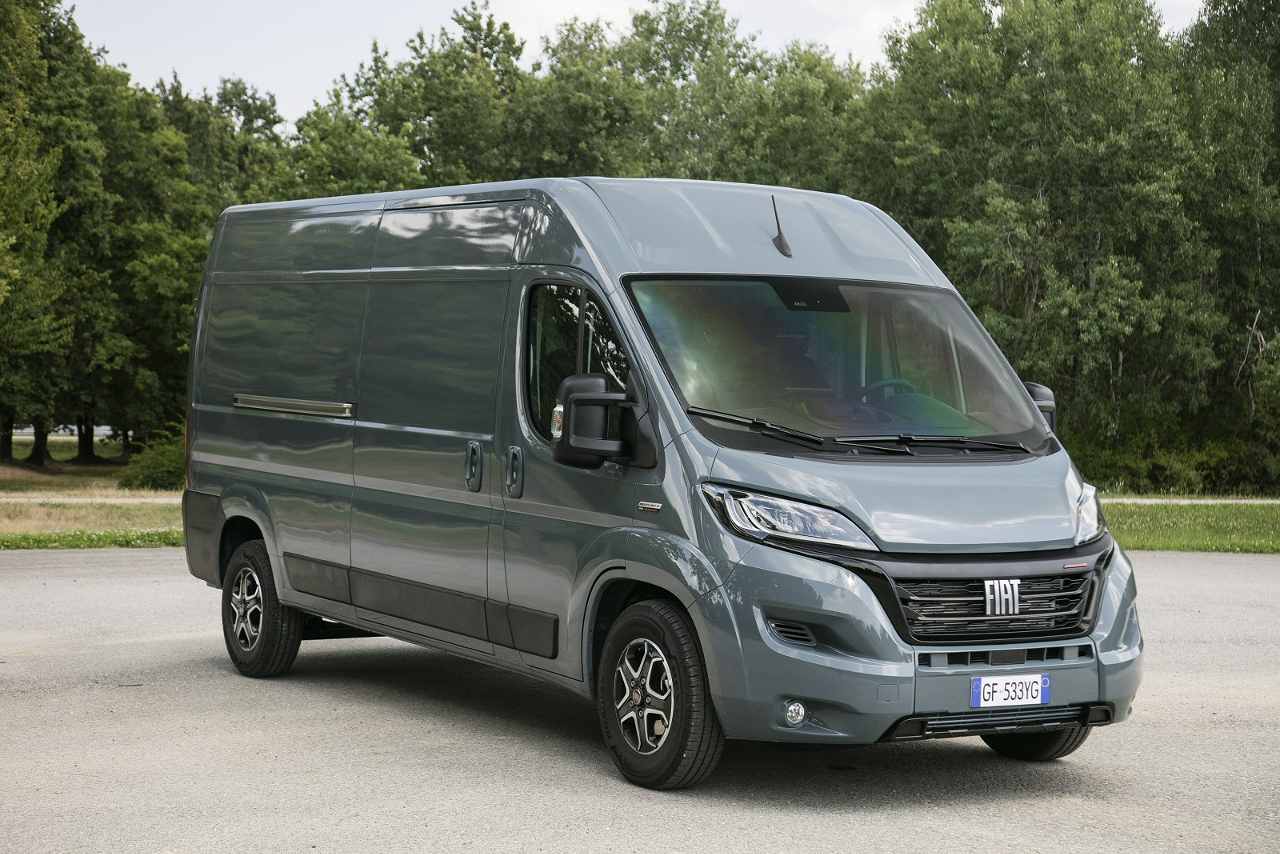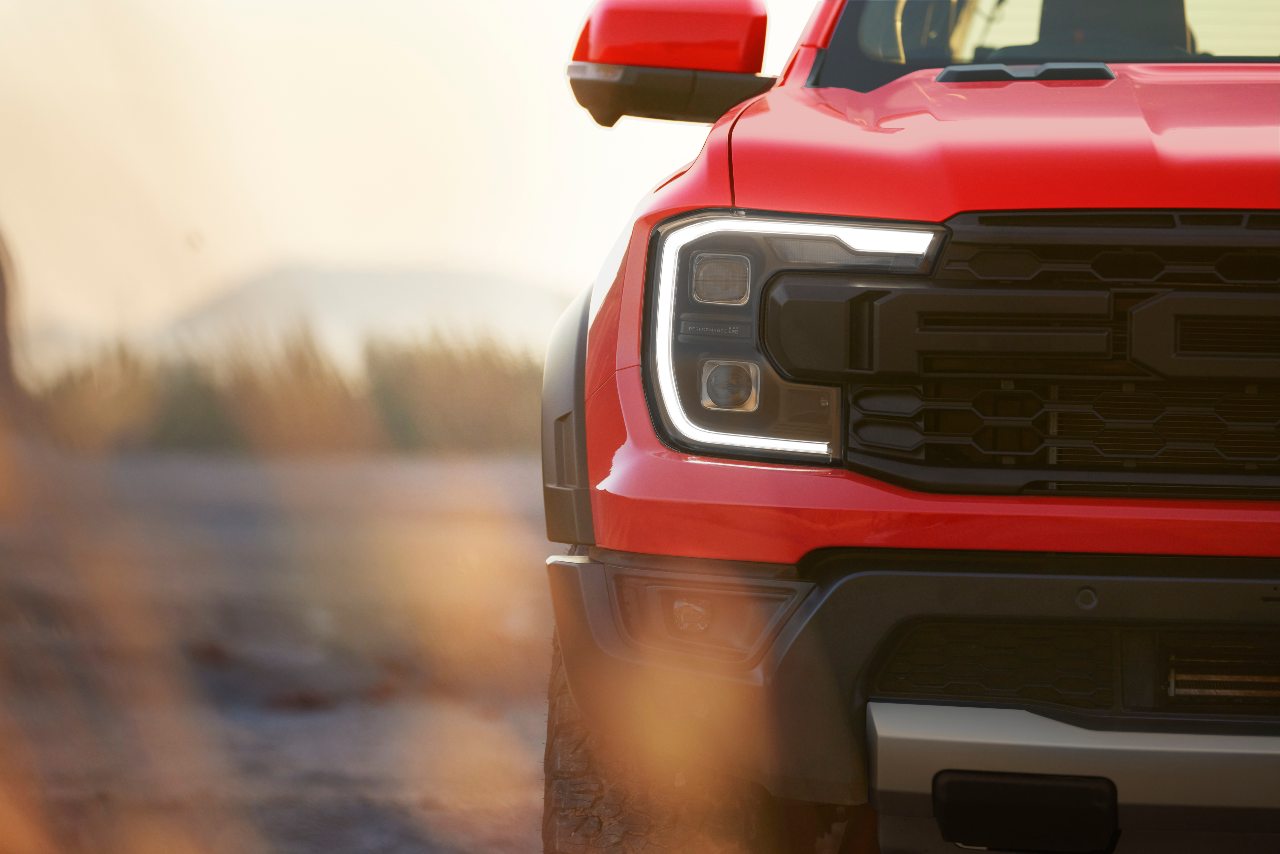By Tim Cattlin
If you’re looking for a big van, and you’re looking for a fully electric van too, then there are a couple of worthy contenders you might want to consider. Vanarama’s Van Expert Tim Cattlin puts the Maxus eDeliver 9 up against the Renault Master ZE.
Competition is really hotting up in the large electric van sector with almost all manufacturers either having something to offer, or a vehicle close to being available to order. Renault has been a pioneer of electric vehicles, the Kangoo ZE having been on sale since 2012 and it was only a matter of time before they launched a fully electric Master.
Chinese firm SAIC, who market their vans in the UK under the Maxus brand has been developing electric vehicles for some time and are rapidly gaining a foothold in the market, causing some of the more established manufacturers to look nervously over their shoulders.
On The Outside
The Renault is offered in 3 body lengths, 2 heights and 2 weights, whereas the Maxus has just 2 body sizes available. There’s very little to distinguish the Master ZE on the outside from the diesel engined models. With a striking front end, the rest of the exterior is generally functional with not too much in the way of bling.
The Maxus looks uncannily like another, very popular van and given that Chinese vehicle manufacturers have been known to, well, shall we say take ‘inspiration’ from western products this may come as little surprise. The front perspective is very aggressive with a large chrome grill, and this, combined with LED headlights and daytime running lights make quite a statement. The eDeliver 9 is generously blessed with some nice 16” alloy wheels as standard equipment.
In The Cab
Both these vans are only available in a single trim level so comparisons are nice and easy. Go for the Renault and you’ll find a DAB radio with Bluetooth connectivity (but there’s no multimedia screen). There’s not too much in the way of tech but you do get electric front windows and a trip computer. Safety isn’t overlooked and the Master ZE has ESP with Grip Xtend, Hill Start Assist and Trailer Swing Assist all as standard.
The Maxus comes with a 10” touchscreen which includes a reverse camera display, air conditioning, cruise control, electric front windows, parking sensors, an anti-theft security system and various safety tech including a blind area monitoring system. Strangely, a DAB radio is not fitted which seems quite some oversight from the manufacturer and importer.
Under The Bonnet
This is the area where one van has a distinct advantage. The Master ZE has a 57kw motor which produces 225nm of torque whereas the eDeliver 9 comes with a 150kw power unit generating a very handy 310nm of torque. Acceleration times are not stated but, both the Renault and Maxus are restricted to a top speed of 100kmh (62mph).
There’s no doubt that with a full payload and being driven on urban routes the huge difference in torque between the 2 vans would be very noticeable and, whilst some might say the Maxus is over-powered, there’s no denying the attraction of some additional oomph.
Range And Charging
There’s just 1 battery option available for the Master ZE, a 33kwh pack which offers an official range of 75 miles. You’ll get a full charge from a 7kw wallbox charger in around 6 hours but Renault doesn't state a time for a 0-80% public DC charge point.
There’s a decision to be made if you opt for a Maxus eDeliver 9 as there’s a choice of 3 battery options, 51.5kwh, 72kwh or 88.55kwh. The official range for each is 112, 146 and 185 miles respectively and, even if you take these figures with a pinch of salt for real world driving with a load on, there will still be more than enough range for the vast majority of van operators to go a full working day without having to top up the batteries at a public chargepoint.
Charge times for the Maxus depend on the battery pack you’ve specified but, using an 11kw wallbox charger, it should take no more than 8.5 hours to fully charge the vehicle. Using a public DC charger, you’ll get 80% of range back in just 45 minutes.
In The Back
Both vans have a single side loading door and twin rear doors as standard. As you’d expect, a full height steel bulkhead protects driver and passenger from shifting loads in both the Renault and Maxus. The Master has 8 tie down points, the eDeliver 9 having 10.
Weights And Measures
Perhaps the only surprise is that, for the UK market both Renault and Maxus haven’t taken advantage of the government’s dispensation which means that 4.25 tonne GVM (Gross Vehicle Mass) electric vans can enjoy the more relaxed licencing and operating laws which apply to 3.5 tonne GVM commercial vehicles. This is intended to ensure that payloads, which are affected by the weight of the battery packs remain competitive.
Having said that, both vans have very respectable load capacities. The Renault can carry over 1 tonne even in its 3100kg GVM form, and the 3500kg model boasts an impressive 1425kg payload in L1H2 guise.
Maxus claim that the shorter version has a payload of 1200kgs but this drops to as low as 860kgs on the longer variant.
Towing is a hot topic when it comes to electric vans, as many are not designed by the manufacturer to tow at all. The Maxus however has a recommended towing capacity of 1500kgs, not huge but much better than nothing and probably sufficient for many operators. There are no towing figures available for the Master ZE and it can be assumed that attaching a trailer is not permitted.
With more body options the Master ZE was always likely to be the winner when it comes to load volumes. The L1H1 has an internal length of 2583mm, a height of 1700mm and this translates to a volume of 8.0cu/m. At the other end of the range, L3H2 can take a length of 3733mm, a height of 1894mm and has a volume of 13.0cu/m.
eDeliver 9, in L1 configuration has an internal length of 3019mm, a height of 1792mm resulting in a volume of 9.7cu/m. L2 extends the length to 3413mm and a cube of 11.0cu/m
Warranty And Servicing
Renault offers a 3 year / 100,000 mile warranty on Master ZE, although the battery is covered for 5 years or 62,000 miles. There’s a 2 year / 24,000 mile service interval (with an additional service at the vans first birthday).
Maxus offers a 5-year 60,000 mile warranty on the eDeliver 9 with additional coverage for up to 8 years / 100,000 miles against battery capacity loss. Service intervals are every 12 months or 18,645 miles.
So, Which Is Best?
At first glance, the eDeliver 9 would seem to be the clear winner, with a more powerful motor and some great battery options. It’s also got a decent level of equipment as standard and has the ability to tow. But, the Renault is available in more body configurations, has a greater payload, longer service intervals and an extensive dealer network for service and repair.
Whilst some may be cautious about a relatively new to us, manufacturer who have yet to establish a reputation for quality and durability in its products, it has to be said the eDeliver 9 is a very attractive prospect indeed…
Get the latest Deliver 9 deals and the latest Renault Master lease offers at Vanarama, the electric leasing experts.

